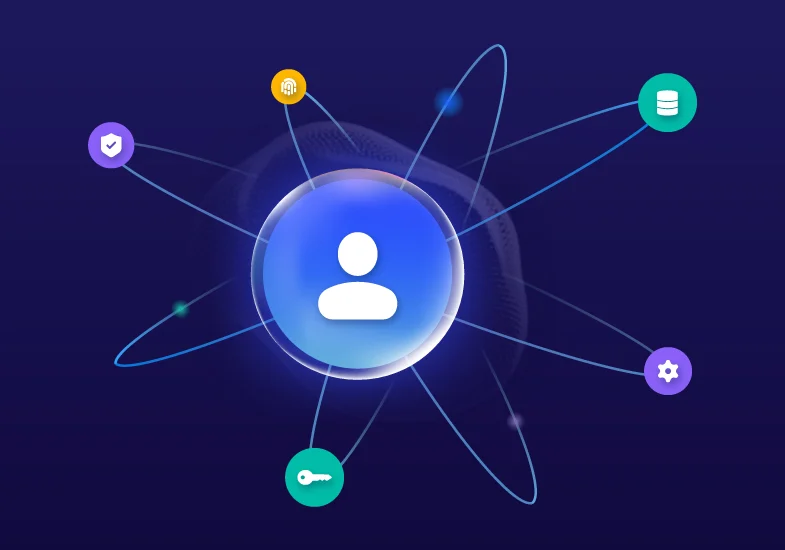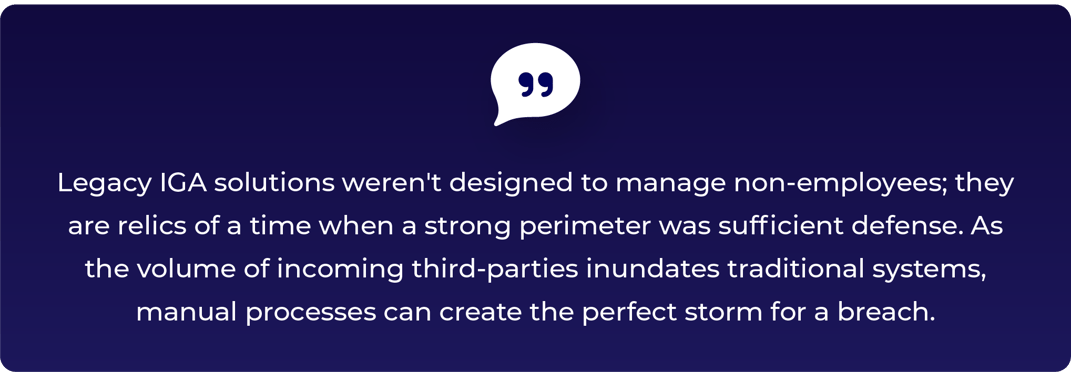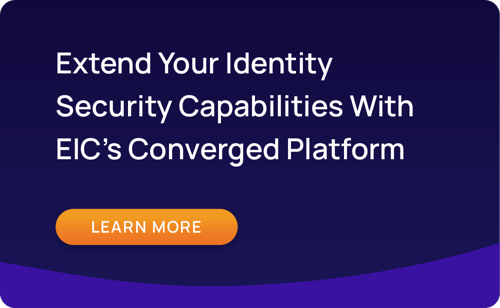As more and more companies rely on these relationships, they need better tools to help them stay ahead of emerging security and compliance risks. The era of using spreadsheets to manage third-party relationships has passed. The modern workforce requires an efficient and automated way to onboard employees, create an audit trail of what was done and who approved it, and to manage all relationships across their lifecycles.
Not sure how it works? Let’s look at how quick and secure onboarding hundreds of users can be.
7 Key Features That Simplify Onboarding and Management of Third Parties
When it comes to onboarding third-party organizations and their workers, consistent data is the name of the game. A converged IGA and TPAG solution should include onboarding and management features that save time, minimize manual errors and maintain data integrity.
Lifecycle rules: If you want a line-of-business or risk management executive to approve new additions, business approval rules will help to ensure you’re meeting specific business requirements while providing the least privileges necessary for the specific organization.
You can also organize third parties through a customized hierarchy, providing different partners with different rules for each
User experience: Above all, it should be easy to request access and to provide the required details. Personalized invitations and self-service user onboarding can significantly boost end-user productivity and decrease administrator workloads. If you need greater identity proof for sensitive roles and access, registration can be tied to the validation framework and even integrated to an identity proofing solution.
User registration: To stay compliant, organizations must have a way to ensure that they have all of the critical data on a user in a consistent format for clear access reviews and future certifications. Invitation-based user registration and birthright provisioning of accounts can accelerate onboarding to create an auditable documentation trail of what was done and who approved it.
Multiple gateways: Companies also need the freedom to add organizations through multiple gateways, whether via user interface, API, or bulk upload. Personalized registration forms and a validation framework reduce manual entry errors, save time, and get consistent data on every organization.
Cross-platform integration: An effective solution should integrate with many of the leading system of record (SOR) solutions for non-employee user identities and many of the leading IDaaS solutions used for federation.
Access provisioning: It’s critical to assign the right amount of risk-aware access to the individual user. Just because a user is a member of a group doesn’t mean that they should all have the same access. Automating access provisioning, requests, and risk-based approvals — along with other Joiner, Mover and Leaver processes — simplifies management of the identity lifecycle.
Monitoring: With the ability to record trends over time in dashboards, IAM teams can identify particular areas that need attention, like a specific application with a large number of alerts, or a specific third-party organization that may not be administering their users appropriately.
Let’s take a look at how Saviynt delivers these features so you can get third parties quickly and securely identified, vetted, and onboarded:
Don’t Use The Wrong Tool For The Job
The bottom line: organizations don’t need yet another point solution. They need one end-to-end platform that can manage all identities: internal employees, external users, IoT devices and bots.
Saviynt’s IGA and TPAG gives organizations a modern, all-in-one solution with a single code base, not a bunch of stitched-together solutions from multiple companies. Enterprise Identity Cloud (EIC) wraps third-party governance into a modern, cloud-based IGA solution that simplifies the tech and security stack. It also effectively streamlines and consolidates internal and external identity management across on-premises, hybrid, and cloud.
Whether you’re spending too much time provisioning users, find it too complex or time-consuming, or are running into compliance problems during audits, Saviynt EIC can make identity lifecycle governance more efficient, well-documented, and simple. Download the IGA + TPAG Solution Guide to learn more.
In the next installment, we’ll take a closer look at why traditional IGA can’t solve today’s third-party lifecycle challenges.










